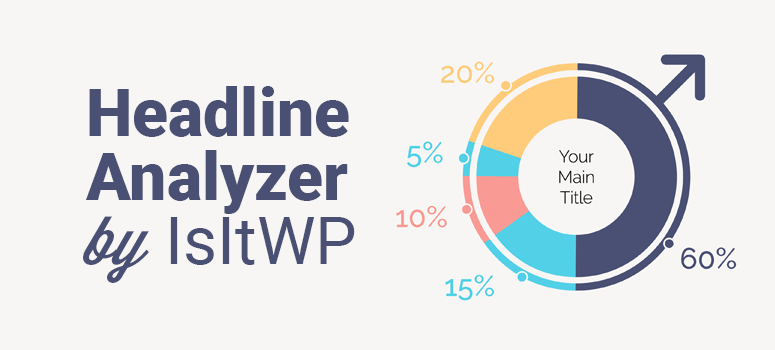Introduction to Headline Analyzers
Crafting captivating headlines is crucial for grabbing attention in today’s content-saturated world. Whether you’re writing a blog post, a social media update, or an email subject line, the effectiveness of your headline can make or break the success of your content. This article dives into the world of headline analyzers, tools designed to help you optimize your headlines for maximum impact.
What is a Headline Analyzer?
A https://thekansaspost.com/ is a digital tool that evaluates the quality and effectiveness of your headlines. It uses algorithms to analyze various components of your headline, such as its length, emotional appeal, use of keywords, and potential SEO impact. By providing a numerical score or detailed feedback, these tools help you refine your headlines to increase engagement and click-through rates.
Importance of Crafting Effective Headlines
In a sea of online content, your headline serves as the first impression for potential readers. A compelling headline not only attracts clicks but also sets the tone for what your content offers. It can convey urgency, evoke curiosity, or promise a solution to a problem—essentially drawing your audience into the rest of your article or post.
Anatomy of a Powerful Headline
Key Elements of a Headline
When creating headlines, several key elements contribute to their effectiveness. Understanding these components can guide you in crafting headlines that resonate with your audience and achieve your content goals.
Length
Headlines that are concise and to the point tend to perform better. Ideally, aim for 6 to 10 words or around 50-60 characters to ensure they are fully visible in search engine results and social media feeds.
Clarity and Specificity
A clear headline communicates exactly what the content offers. Specificity adds value by addressing a particular audience need or interest, making it more likely to attract clicks from relevant readers.
Keywords and SEO
Incorporating relevant keywords into your headline can improve its visibility in search engine results. However, avoid keyword stuffing and ensure your headline reads naturally and appeals to human readers first and foremost.
Emotional Appeal
Emotionally resonant headlines can provoke curiosity, stir emotions, or promise a benefit, prompting readers to click through to learn more. Use words that evoke emotion without being misleading.
Examples of Effective Headlines
- “10 Proven Ways to Boost Your SEO Rankings Today”
- “Discover the Secret to Effortless Weight Loss”
- “How to Master Public Speaking in 5 Simple Steps”
How Headline Analyzers Work
Features of a Headline Analyzer Tool
Headline analyzers utilize advanced algorithms to evaluate various aspects of your headline. Here are some key features commonly found in these tools:
Headline Score
Most headline analyzers provide a numerical score or rating based on factors such as length, emotional impact, and keyword usage. This score gives you a quick assessment of your headline’s potential effectiveness.
SEO Analysis
Tools may analyze your headline for SEO-friendliness, suggesting improvements to include relevant keywords or adjust wording for better search engine visibility.
Emotional Analysis
Some analyzers assess the emotional appeal of your headline, indicating whether it conveys excitement, urgency, or other emotions that can attract clicks.
Popular Headline Analyzer Tools
Several online tools offer headline analysis, each with its unique features and interface. Popular choices include CoSchedule’s Headline Analyzer, Sharethrough’s Headline Analyzer, and Advanced Marketing Institute’s Emotional Marketing Value Headline Analyzer.
Best Practices for Writing Headlines
Use of Power Words
Powerful words such as “ultimate,” “essential,” “instant,” or “secret” can add impact to your headlines, grabbing attention and enticing readers to click through.
Leveraging Numbers and Lists
Headlines with numbers tend to attract attention because they promise specific information and structure. Lists also imply actionable content, making your headline more compelling.
Asking Questions
Questions in headlines engage readers by prompting them to consider a problem or desire a solution. They create curiosity and encourage clicks to find the answer or solution offered in your content.
Avoiding Clickbait
While it’s important to create enticing headlines, avoid misleading readers with exaggerated claims or promises your content doesn’t fulfill. Trust and credibility are key to maintaining audience engagement.
A/B Testing Your Headlines
Experiment with different variations of your headlines using A/B testing. This allows you to compare performance metrics and optimize your headlines based on real data and audience response.
Advantages of Using Headline Analyzers
Improved Click-through Rates
By refining your headlines with the help of analyzers, you can increase the likelihood of users clicking on your content, driving more traffic to your website or blog.
Enhanced SEO Performance
Optimizing headlines for SEO can improve your content’s visibility in search engine results, attracting organic traffic and boosting your site’s overall SEO efforts.
Time Efficiency in Content Creation
Headline analyzers streamline the process of crafting effective headlines, saving you time and effort in brainstorming and refining your content’s initial hook.
Conclusion
Crafting compelling headlines is both an art and a science. Headline analyzers provide valuable insights and tools to help you create headlines that captivate your audience and drive engagement. By understanding the key elements of effective headlines and leveraging the features of headline analyzer tools, you can significantly enhance the impact of your content across various platforms.


